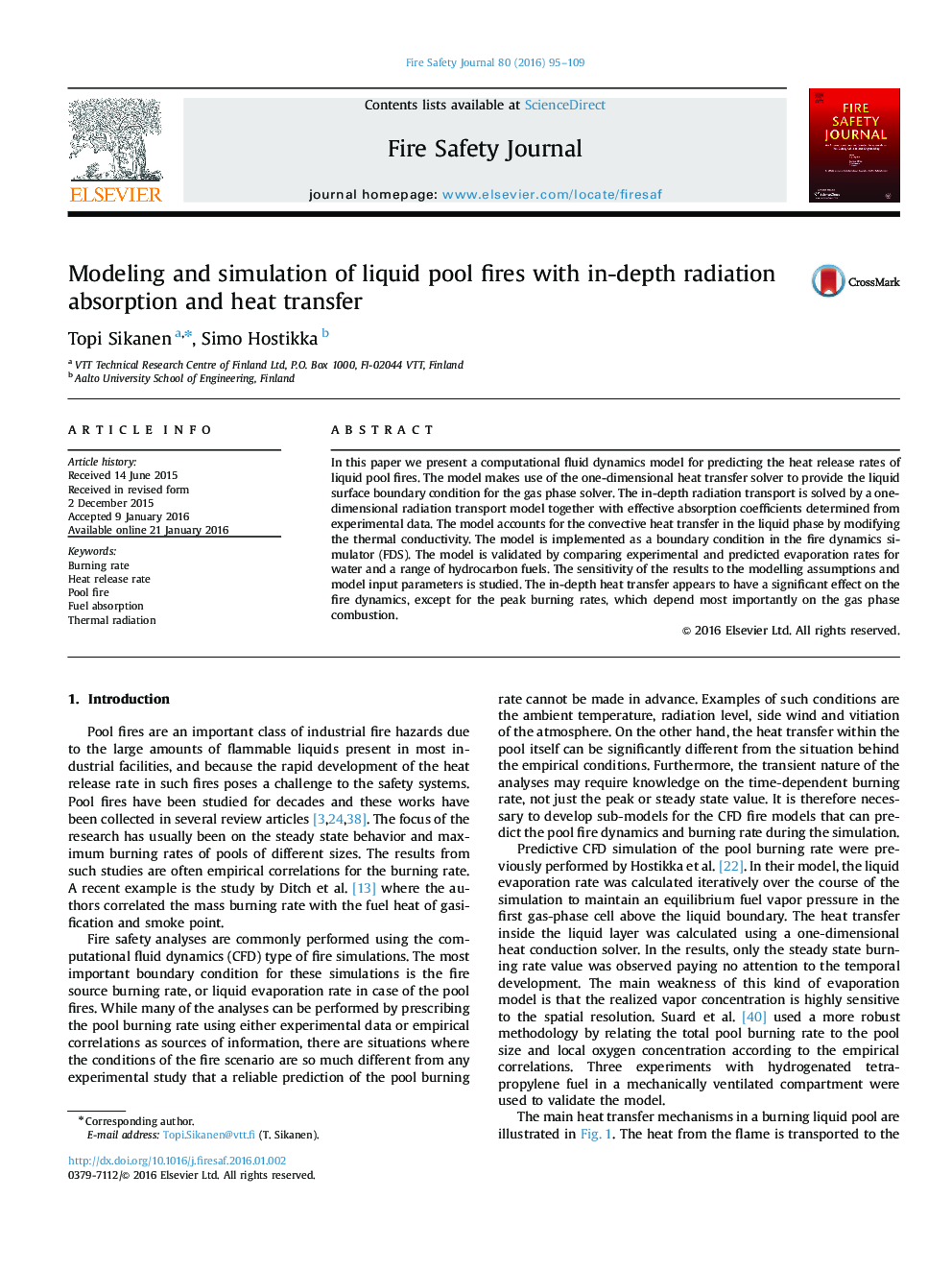| Article ID | Journal | Published Year | Pages | File Type |
|---|---|---|---|---|
| 6742032 | Fire Safety Journal | 2016 | 15 Pages |
Abstract
In this paper we present a computational fluid dynamics model for predicting the heat release rates of liquid pool fires. The model makes use of the one-dimensional heat transfer solver to provide the liquid surface boundary condition for the gas phase solver. The in-depth radiation transport is solved by a one-dimensional radiation transport model together with effective absorption coefficients determined from experimental data. The model accounts for the convective heat transfer in the liquid phase by modifying the thermal conductivity. The model is implemented as a boundary condition in the fire dynamics simulator (FDS). The model is validated by comparing experimental and predicted evaporation rates for water and a range of hydrocarbon fuels. The sensitivity of the results to the modelling assumptions and model input parameters is studied. The in-depth heat transfer appears to have a significant effect on the fire dynamics, except for the peak burning rates, which depend most importantly on the gas phase combustion.
Related Topics
Physical Sciences and Engineering
Engineering
Civil and Structural Engineering
Authors
Topi Sikanen, Simo Hostikka,
